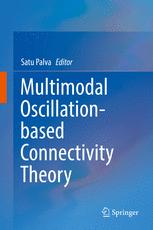نظریه رسانایی بر اساس نوسان چندوجهی ۲۰۱۶
Multimodal Oscillation-based Connectivity Theory 2016
دانلود کتاب نظریه رسانایی بر اساس نوسان چندوجهی ۲۰۱۶ (Multimodal Oscillation-based Connectivity Theory 2016) با لینک مستقیم و فرمت pdf (پی دی اف)
| نویسنده |
Satu Palva |
|---|
| تعداد صفحهها |
147 |
|---|---|
| نوع فایل |
|
| حجم |
5 Mb |
| سال انتشار |
2016 |
89,000 تومان
معرفی کتاب نظریه رسانایی بر اساس نوسان چندوجهی ۲۰۱۶
مکانیسم های عصبی در سطح سیستم هایی که فعالیت عصبی توزیع شده زمانی، آناتومیکی و عملکردی را در فرآیندهای شناختی منسجم در مغز انسان هماهنگ می کنند، به خوبی شناخته نشده اند. در انسان، نوسانات عصبی و هماهنگ سازی را می توان به صورت غیر تهاجمی با استفاده از الکتروانسفالوگرافی و مغناطیسی مغزی (EEG و MEG) ثبت کرد که در صورت ترکیب با روش های بازسازی منبع، وضوح زمانی عالی و تفکیک فضایی کافی دارند. در این کتاب، نویسندگان برجسته در این زمینه توضیح می دهند که چگونه پیشرفت های روش شناختی اخیر راه را برای چندین پیشرفت بزرگ در مشاهدات هماهنگ سازی در مقیاس بزرگ از داده های MEG غیرتهاجمی انسانی هموار کرده است. این پوشه همچنین هشدارهایی را فهرست می کند که بر تجزیه و تحلیل همگام سازی تأثیر می گذارد. اینها شامل حساسیت ناهمگن MEG به منابع سطحی قشر مغز و مهمتر از همه، تعدد پیامدهای اختلاط خطی است. اختلاط خطی یک عامل مخدوش کننده در تحلیل های همگام سازی در سطح حسگر است، اما در سطح منبع نیز وجود دارد. سپس روش هایی که می توانند برای جلوگیری یا جبران این مشکلات استفاده شوند مورد بحث قرار می گیرند. در مرحله بعد، چندین نویسنده تعدادی از نقش های عملکردی را بر عهده می گیرند که سیناپس ها به طور گسترده در شناخت انجام می دهند. نویسندگان ارزیابی می کنند که چگونه سازماندهی مکانی، زمانی و طیفی و قدرت شبکه های همزمان محلی و مقیاس بزرگ با ادراک حسی آگاهانه، عملکردهای حافظه کاری بصری و توجه مرتبط است. این فصل ها چندین خط تحقیق را خلاصه می کنند که نشان می دهد چگونه قدرت نوسانات موضعی و نوسانات بین ناحیه ای در ساختارهای مغزی هر دو قشری و زیر قشری با عملکردهای شناختی مرتبط است. این داده ها با هم نشان می دهد که نوسانات عصبی همزمان ممکن است یک مکانیسم عصبی در سطح سیستم باشد که زیربنای هماهنگی پردازش توزیع شده در شناخت انسان است. در راستای این استدلال، نویسندگان دیگر به شرح چگونگی تغییر نوسانات و هماهنگ سازی در جمعیت های بالینی می پردازند و اطلاعات ارائه شده در مورد افراد سالم را تکمیل می کنند. نکته مهم این است که این کتاب شامل فصل هایی از نویسندگانی است که از رویکردهای مختلف زیادی برای تجزیه و تحلیل نوسانات عصبی استفاده می کنند، از فعالیت های نوسانی محلی گرفته تا استفاده از ابزارهای نظری نمودار در تحلیل های همگام سازی. به این ترتیب جلد حاضر دیدگاه جامعی از تحلیل ها و اهمیت عملکردی نوسانات عصبی در انسان ارائه می دهد. این کتاب برای دانشجویان مقطع دکترا و فوق دکترا و همچنین دانشمندان پژوهشگر در زمینه های علوم اعصاب شناختی، روان شناسی، پزشکی و علوم اعصاب طراحی شده است.















